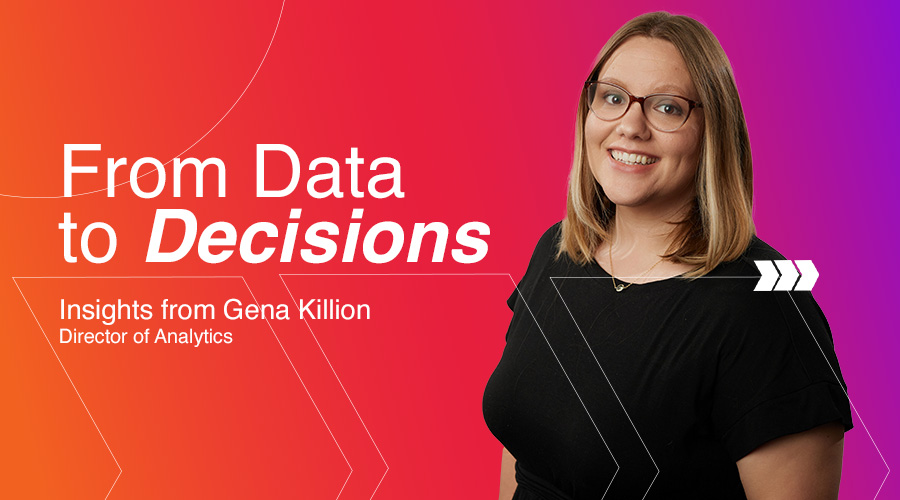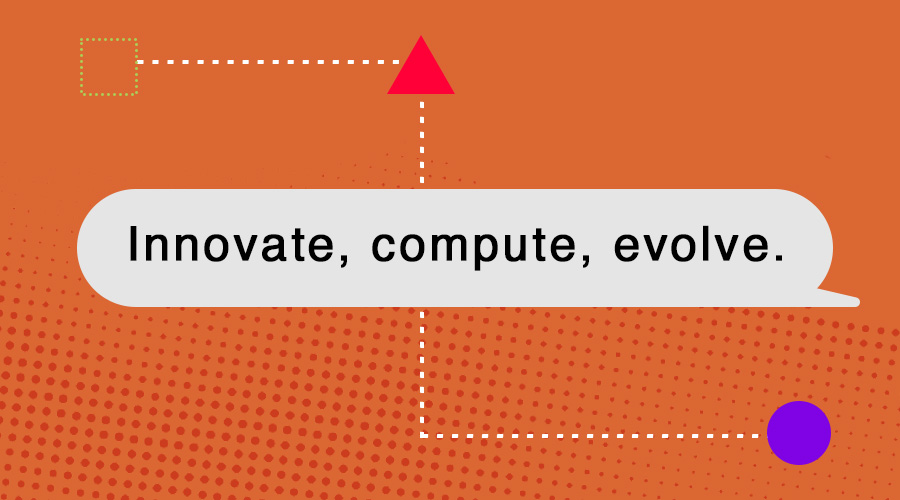Editor’s note: AI didn’t write this blog, although it did help with some of the research! All uses of the em dash are entirely courtesy of Gena Killion, Director of Analytics and word nerd. Feel free to send her your punctuation hot takes — she’d love that!
Why Data Should Drive Your Decision Making
In 2024, an estimated 149 zettabytes of global data were collected, stored and consumed — requiring over 15 million kilowatt-hours (kWh) of energy and costing upwards of $260 billion. Yet, only a fraction of this data is meaningfully leveraged.
And to be clear, we aren’t arguing for the collection or consumption of less data. We’re marketers – the more data we can digest, the better! But we are advocating for making smarter use of the data we already have.
It’s an important conversation to have when most enterprise companies are storing terabytes to petabytes of customer data across their CRM & sales platforms, marketing platforms, customer support & service data and third-party enrichment data sets. Yet, despite all this information, much of it goes unused. That means missed sales, lost opportunities to build deeper customer loyalty and inefficiencies that keep marketing efforts from reaching their full potential. It’s important that access to and understanding of all available inputs is getting to the right people both inside and outside your organization to analyze and act on.
How We Use Data to Make Decisions
The key to ensuring your team uses data effectively is giving them the access and context needed to ask the right questions. We also think it never hurts to give them a smart partner in the process, but we can acknowledge our bias!
Here are just a few ways our clients and marketers like them are leveraging data to make decisions:
1. Marketing: Optimizing Campaign Performance
Understanding campaign performance — and the factors that influence it — helps marketers optimize both budget allocation and time investment. Identifying key trends in channel and message helps maximize ROI on efforts that work.
An example: A B2B company runs an email campaign to generate leads. By analyzing open rates, click-through rates (CTR) and conversion rates, the marketing team discovers that subject lines featuring industry-specific insights yield a 10 percent response rate. They adjust future emails to include similar messaging, increasing engagement and sales opportunities.
2. Sales: Identifying High-Value Customers
Targeting is central to identifying high-opportunity or underutilized market segments. Analyzing the right data can identify patterns in opportunity and potential.
An example: Let’s say a manufacturing brand uses CRM data to analyze past sales and finds that mid-sized companies in the industry have higher repeat purchases and longer customer lifecycles. Armed with this insight, the marketing and sales teams shift focus to similar-profile companies, tailoring messaging to their specific needs — ultimately increasing share of wallet in that segment.
3. Product Development: Improving Features Based on Usage Data
Customer behavior data can help drive understanding about what’s working and not working in the experiences that companies develop, promote and monetize.
An example: Let’s say we’re working with a brand’s app and, through user behavior analysis, notice that 80 percent of users don’t engage with a specific feature. This brings up an important discussion about prioritizing development resources to either improve that feature or discontinue it and reallocate development resources to enhance a more widely used feature that can lead to higher user satisfaction and retention.
4. Customer Experience: Personalizing Interactions
It is no secret that personalization at scale is one of the most pressing challenges B2B companies and other heavily matrixed organizations are facing today. But personalization relies on data presence to facilitate those interactions, and that’s where data analytics comes in!
An example: A B2B brand wants to leverage more personalization at scale, but they know that to automate those interactions at scale, they have to understand what data is collected, what percentage of user profiles have that data available, and if not available, how that data could be collected for use. They partner with their agency to deep dive into all the available data sources attached to their customer profiles and determine that over 50 percent of the total user population has a known product of interest based on either CRM or browsing data.
This allows them to confidently proceed with setting up a test to determine if showing that product of interest in copy and imagery when a user logs in to their customer portal or lands on their home page is effective at driving deeper engagements with their known users.
How to Get Actionable Insights From Raw Data
Now that we’ve explored the types of data marketers can use to make smarter decisions, it’s time to focus on what really matters; putting that data to work. Turning mountains of information into meaningful action starts with integration. By centralizing data in a unified warehouse, teams gain access to real-time dashboards, data visualizations and models that support team insights and analysis.
Step 1: Collect & Organize Your Marketing Data
Before making decisions, ensure you’re working with clean, accurate and relevant data. Clean data is free from errors and duplicates, accurate data is up to date and correctly reflects reality, and relevant data is the information that truly matters for your goals. For marketers, this means having the right metrics readily available across various tools:
- Website analytics (session and event analytics, heatmaps, session recordings)
- CRM data (customer interactions, opportunity stages, purchase history)
- Email and campaign performance (open rates, click-through rates, conversions)
- Social media engagement (likes, shares, comments, sentiment analysis)
- Third-party intent data (customer interest in products, online behavior signals)
Step 2: Analyze and Identify Patterns
Once your data is consolidated, the next step is to look for trends and correlations that can inform strategy.
Some key questions to ask:
- Which marketing channels are driving the strongest conversions?
- Which audience segments respond best to specific campaigns?
- What content formats generate the most engagement?
- Are there seasonal trends in customer interest or purchase behavior?
- What is the incrementality of our efforts — meaning, the marginal lift compared to the baseline that would occur organically?
For example, if you notice that LinkedIn ads generate higher lead conversion rates than Google Ads but receive less budget, this insight could inform future spending decisions.
Step 3: Implement, Measure and Optimize
Once a hypothesis is validated, act on the insights by optimizing your marketing strategies. But the process doesn’t stop there — continuous measurement is crucial.
- Set clear KPIs (e.g., cost per acquisition, marketing ROI, lead-to-customer conversion rate).
- Monitor results using real-time dashboards.
- Iterate and refine based on what’s working (or not).
For example, if a new email segmentation strategy boosts engagement rates, expand it to other campaigns. If a paid social media test underperforms, adjust targeting or messaging.
Step 4: Advance Your (Data) Capabilities
As you derive insights, you will also find more questions to be answered. As brands mature in their data-driven practice, their analytics needs evolve into more advanced analytics territory.
Whether it’s forecasting, predictive modeling or even quantum computing, the process starts by identifying the right data points to answer key questions. This ensures you build the most effective model — or provide clear, actionable requirements to your analysts and partners!
The Bottom Line
Every day, businesses collect massive amounts of data, but without a clear strategy, much of it gets forgotten. An intentional approach to gathering, storing and analyzing your data ensures you’re not just collecting information but actually leveraging it to drive sales, improve customer experiences and optimize marketing efforts. By making the most of every zettabyte, you can turn raw data into real business impact.
If you’re looking for a partner to help you unlock the full potential of your data, let’s connect!





